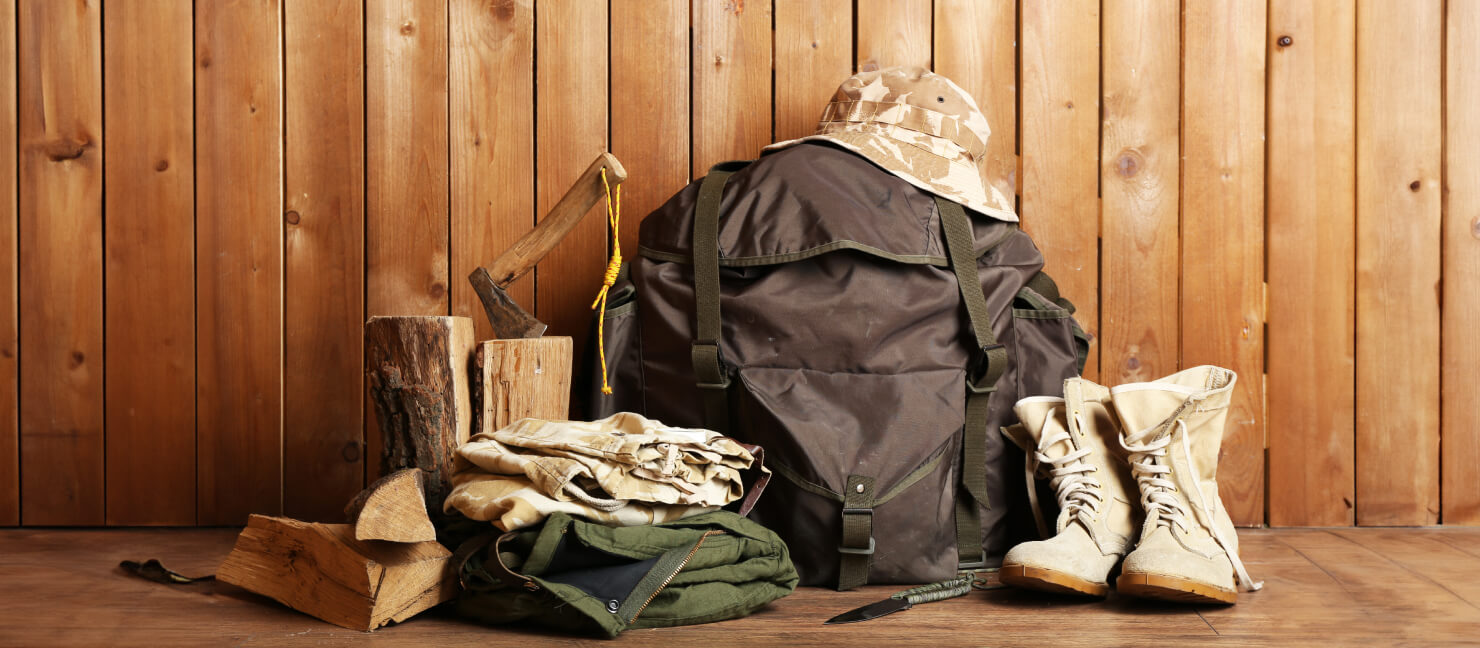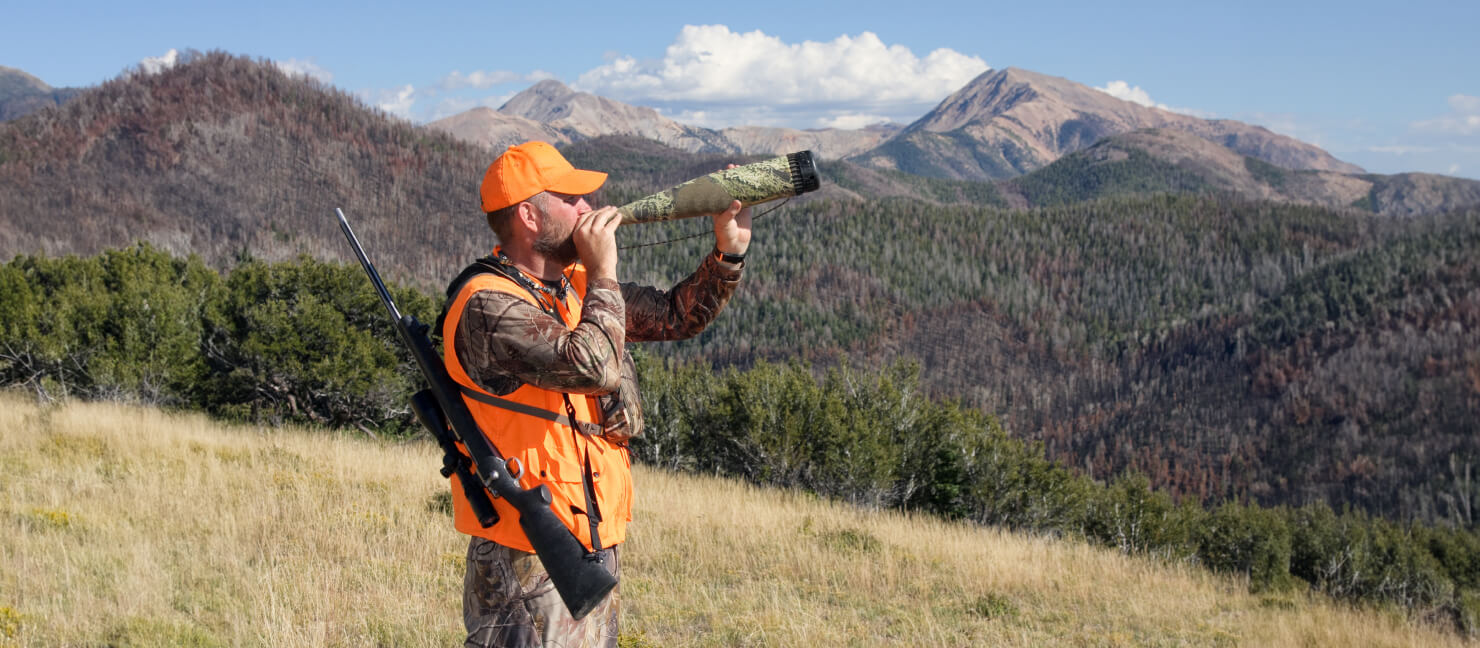Create Your Elk Hunting Pack List With This Complete Guide
Before you set off on an elk expedition, think about the weight you'll carry both during the hunt and your return. If you’re lucky, that return trip will include carrying back a prized elk!Elk hunting can include using horses, navigating difficult backcountry terrain, or hiring an experienced guide. As you venture forth, make sure you have the necessary elk hunting gear to conquer any challenge.
Key Takeaways
- Learn the challenges of hunting these elusive creatures.
- Whether you’re going hunting for a day or week, uncover what elk hunting gear essentials you need.
- Learn what to include in your elk hunting pack list when it comes to clothes and personal items like gloves, decoys, and more.
- Review our elk hunting checklist for archery, guns, ammo, and meat processing tools so you can make clean kills and process the game meat.
- Your gear needs depend on the types of elk hunts for which you plan. Discover what elk hunting gear is best for bivy elk hunts, fully guided elk hunts, and more.
Elk Hunting Challenges: Elk vs Deer
In the hunting world, elk remain among the most formidable challenges! Don’t make the mistake of confusing an elk with a deer. How you hunt elk and pack ahead of time is a world apart from a deer hunt.
-
While elk are less sensitive than deer, they are three times larger. You’ll need different (and more) gear to successfully hunt an elk.
-
Field dressing an animal of their size also requires more time, effort, & gear should you shoot your prize.
-
It has a few obstacles you’ll have to overcome: everything from quartering an elk (due to its massive size) to sneaking up on one.
-
Keep your pack under 45 lbs so you don’t wear out. Anything more, and you may only end up losing the energy and endurance you’d need once you land a good shot.
-
While you can repurpose some of the hunting gear you use for turkey or deer hunting, elk hunting gear is a whole new ballgame. We recommend being very intentional with your elk gear/kit.
Expert Tip:
"Quartering” is an important field butchering term you should know ahead of time. Two popular methods exist: the traditional & gutless methods. Either way, quartering is when you cut up or split the elk into four manageable sections for easier transport.
Essential Elk Hunting Gear Checklist

When venturing into the Rocky Mountains to hunt elk, you’ll need some essential elk-hunting gear. Don't overlook these crucial items:
-
Hunting Frame Pack System: A hunting frame pack system comes with handy compartments for easy supply hauling. Out of everything on this list, pick this up first!
-
Hunting Backpacks: You can also use these camo backpacks as day packs for shorter hunting trips.
-
Trekking Poles: Trekking poles help stabilize you while you walk across the backcountry with heavy loads on your back. They also allow you to more smoothly navigate through any rocky terrain
-
Sleeping Supplies: Having a tent, sleeping pad, sleeping bag, & camping pillow ensures you're well-equipped for a comfortable night's rest during your hunting expedition. You may need to wait hours to track elk after a shot.
-
Ground Blind: Enhance your concealment with a ground blind. You can combine it with other tactics to increase your chances of making that crucial shot.
-
Food & Water: Don’t forget the necessities like water purification tablets, hydration packs, & snacks.
-
Cooking Supplies: If you’re hunting for days at a time, bring cooking supplies like utensils, a camp stove, fuel, paper towels, & plastic bags with you.
Other Elk Hunt Essentials
Elk Hunting Pack List: Clothes, Accessories, & More

Unexpected moments can define your hunt. That's why having an elk hunting pack list in advance is a must! A solid pack should at least have clothing, flashlights, rain gear, and more. It should also incorporate hunting aids like scent eliminators and decoys.Utilize this list to carefully assemble your essential packing items:
-
Elk Calls: Elk calls entice bulls to approach female elk for mating purposes. While utilizing a blind is an option, incorporating elk calls into your strategy significantly increases your chances of successfully bagging an elk.
-
Camo Clothes: Gear up with camo clothes — like a hunting jacket, vest (orange vest for safety), and hunting pants. Don’t forget essential base layers like thermal underwear & mid-layers when you need more warmth in the backcountry.
-
Footwear: Wear comfortable hunting boots and pack multiple pairs of hunting socks so your feet stay dry and warm.
-
Headgear: Stay warm and concealed with a camouflage cap or beanie.
-
Personal Items: Include personal items like chapstick, tape, a toothbrush, wet wipes, ibuprofen, moleskin for blisters, & a towel.
Other Personal Items
Expert Tip:
Scent eliminators may not always be enough. The next time you hunt elk, use scent-free products (like unscented soap) before you head out!
Elk Hunting Checklist: Archery, Guns, Ammo, & Processing

Elk hunting poses huge challenges for underprepared or practiced hunters. These creatures can vanish in an instant: whether they're crossing a stream or simply evading your detection. Investing in the best equipment and weapon you can gives you the best chances out in the backcountry.
-
Pelvic saw or hand saw
-
Tarp
-
Coolers
Why a rangefinder for hunting elk? Rangefinders will help you gauge the true distance between you and your target when you’re using a bow. When the shot you’ve been waiting so much time for opens up, you should know exactly how far you need to shoot distances of 200+ yards.
Types of Elk Hunts
Your elk hunting pack list drastically changes depending on the type of hunt you plan. Customize your gear kit for each type of elk hunt: bivy sack camping, drop camping, truck camping, & fully guided.
Elk Hunt via Bivy Sack
A bivy elk hunt takes the most minimalist approach to hunting elk in the backcountry. Hunters have to carry everything on their backs. These hunts are perfect for those who seek a more rugged experience.
-
Sleep under the stars in a bivy sack at night
-
Set up camp wherever you encounter elk, maximizing your coverage
-
Pack only the essentials
Expert Tip:
Carry no more than one-third of your total body weight so that you don’t exhaust yourself during or even before the hunt.
Elk Hunt via Truck Camping
Truck camping is most prevalent in the western United States. These types of elk hunts blend affordability with modern conveniences.
-
Utilize motorized vehicles
-
Transport plenty of gear and set up a cozy, well-stocked camp
-
Think about bringing an ATV to retrieve your game

Elk Hunt via Drop Camp
Step into the world of drop camp elk hunts, which are a unique mix of self-sufficiency and guided support. Drop camp hunts are great for experienced elk hunters who need minimal help.
-
Use horses, donkeys, or mules to carry your heavy gear to camp
-
Access designated wilderness areas for a more authentic hunting experience
-
Allow you to have well-stocked camps with wall tents, cots, tables, chairs, water sources, etc.
-
Some drop camps may provide camp gear, but don’t leave home without your own gun & ammo
-
Limit your load to around 50 lbs so you're agile when you carry essential supplies
Elk Hunt That’s Fully Guided
While fully guided hunts are usually the most expensive, you’ll receive hands-on help every step of the way. You can usually expect the following on a fully guided elk hunt:
-
Expert’s hand in tracking and field dressing/meat processing any elk
-
Meals prepared by a cook at your camp
Expert Tip:
Fully guided elk hunts are perfect for beginners and first-time hunters. Not only can you get the feel for it, but you’re also immersed in the experience as well as surrounded by experts.
Have Fun Out There!
Have your eyes set on that majestic elk? Hunting elk offers both a rewarding and challenging experience. Academy provides all you require for a successful journey: from elk hunting gear to field processing. Explore our range of elk calls, hunting backpacks, and more for day trips or weekend adventures.


